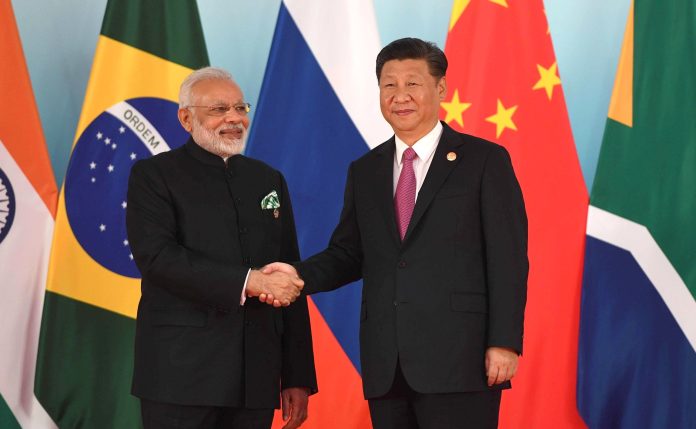A rapidly emerging worldwide superpower, China has seen advancement in numerous spheres ranging from economic to technological. This has been primarily attributed to the endeavors of Xi Jinping, the current President of China. Under Xi’s leadership, China’s GDP was $17.73tn in 2021 marking an increase by over 100% since 2012. However, it is often questioned whether Xi is a continuation of Mao Zedong’s authoritarian approach. India’s Prime Minister Narendra Modi too has been called out for some of his rigid authoritarian policies. The purpose of my writing is to highlight my opinion on the thought process that propels such leaders. Irrespective of whether I agree with their policies or not, I want to delve into the motives of these leaders.
On October 1st, 1949, the People’s Republic of China was born under Mao Zedong. It was his mission to consolidate the Communist Party of China. His Cultural Revolution in 1965 involved tight control over media, and suppression of alternate views and had arts and schools incorporate the party line. Everyone was expected to put Mao on a pedestal – a reflection of his cult of personality. Similarly, Xi also has significant control over education in terms of rejecting universal society, civil rights, and judicial independence. His “War on Law” portraying human rights lawyers as a threat to regime security and his media censorship, depict qualities like Mao.
However, it is important to note the progress China has made under Xi’s leadership. The Cultural Revolution under Mao led to 400K to 10M people losing their lives, most including intellectuals and government officials. It blindly followed Maoism instead of practicality, leading to an economic downturn due to no major capital inflow from other countries. Xi’s policies, contrastingly, have helped China prosper. For instance, the “One Belt, One Road” has led to economic cooperation between Eurasian countries and opportunities for trade, making it 33% of the world’s GDP. This is a prominent departure from Mao’s policies of isolationism. Under Xi, China has been successfully established as a leader in Asia, battling with the US for dominance. The majority of Mao’s policies are the result of a power struggle to establish China as a force in Asia and maximize its growth. Xi’s actions are also influenced by the political tenets of the Chinese Communist Party. Their objectives are to retain power and realize the Chinese Dream of national renewal. Xi aims to uphold the party’s legitimacy. The Chinese political system differs from Western democracies in how it operates, and it is unlikely that China would soon adopt a liberal democratic system.
In comparison, India’s Prime Minister Narendra Modi too has drawn criticism for his authoritarian style. The Citizenship Amendment Act was thought as discriminatory against refugee Muslims from neighbouring countries by not deeming them eligible for citizenship and only allowing Hindus to seek citizenship. This was thought akin to Xi’s oppression of Uyghur Muslims in China. Both leaders are seen targeting minorities with governmental authority. However, like Xi, Modi’s political party, Bharatiya Janata Party, is pro-Hindu, aimed at safeguarding the rights of Hindus. I’m from India and I know that several Indians, especially those in poverty-stricken regions look at Modi as a remarkable figure. Modi’s leadership has been marked by a focus on economic development, job creation, and the empowerment of the poor and marginalised. His “Make in India” initiative has resulted in a significant boost to the manufacturing sector and has encouraged foreign investment in India. This has led to the creation of millions of jobs and has spurred economic growth, making India the world’s sixth-largest economy.
Xi and Modi, in this manner, are trying to preserve the historic identity of their respective nations despite having different political regimes, India being a democracy. Modi’s vision for India is one that is built on the principles of democracy, good governance, and economic progress, which will help India emerge as a major player on the global stage. But I believe that this firmness is necessary to achieve the goals he has set for India’s development, he has shown an unwavering commitment to rooting out corruption and improving governance in India, which has been crucial to India’s progress. This has also been instrumental in strengthening India’s position on the global stage, forging strong ties with countries like the United States, Japan, the Middle East and Israel, which have resulted in increased trade and investment in India.
I, therefore, believe that looking into why leaders project authoritarian tactics is intriguing. It links back to their feeling of responsibility towards their political parties and their nations. Furthermore, in a world of constant power struggles with nations turning violent against each other, seeking means for peace is necessary to maintain world order. It is thus essential to understand the mindset of such leaders for nations to negotiate with them. To achieve a common objective and mutual understanding between nations, it is crucial to consider the political framework of such nations and respect their history which guides their policies today. History of politics plays a key role in understanding the actions of leaders like Modi and Xi and their implications on the world.
































